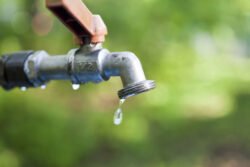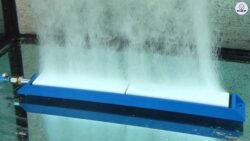
Water Filtration System Installation
Comprehensive Guide to Water Filtration System Installation
Introduction
In an age where clean water is paramount for health and well-being, the importance of water filtration systems cannot be overstated. As contaminants and impurities become a growing concern in water sources, installing a water filtration system has emerged as a viable solution for households and businesses alike. This guide will delve into water filtration systems, the different types of systems, their benefits, and a detailed step-by-step installation process.
Understanding Water Filtration Systems
What is a Water Filtration System?
A water filtration system is designed to remove impurities, contaminants, and particles from water, improving its quality for consumption, cooking, and other uses. These systems come in various types and configurations to suit different needs, from point-of-use systems directly at your kitchen sink to whole-house systems that filter all the water entering a property.
Reasons for Installing a Water Filtration System
-
- Health Benefits: Facilitates the removal of harmful impurities such as lead, chlorine, bacteria, and viruses, ensuring cleaner, safer drinking water.
-
- Improved Taste and Odor: Filters eliminate unpleasant tastes and odors caused by chemicals and contaminants, resulting in more palatable water.
-
- Environmental Impact: Using a water filtration system reduces reliance on bottled water, which in turn minimizes plastic waste and its environmental consequences.
-
- Cost-Effective: Over time, a water filtration system can be more economical than buying bottled water, making it a savvy long-term investment.
-
- Convenience: Home filtration systems deliver clean water directly from the tap, saving time and effort.
Types of Water Filtration Systems
-
- Activated Carbon Filters: One of the most common types, these filters use activated carbon to trap contaminants through adsorption.
-
- Reverse Osmosis (RO) Systems: Strain water through a semi-permeable membrane that removes a wide range of impurities, including minerals, bacteria, and other pollutants.
-
- Ultraviolet (UV) Filters: Employ UV light to kill bacteria and viruses, often used in conjunction with other systems for comprehensive purification.
-
- Whole-House Filters: Installed at the point of entry, these systems filter all water entering a home, ideal for households that want clean water for bathing, cooking, and drinking.
-
- Pitcher Filters: Portable and easy to use, pitcher filters offer a convenient option for those seeking immediate improvements to their drinking water.
Selecting the Right System
Before proceeding with installation, it’s crucial to evaluate which type of water filtration system best suits your needs. Factors to consider include:
-
- Water Quality: Conduct a water quality test to identify specific contaminants of concern.
-
- Filtration Needs: Assess whether you need a point-of-use filter (like an under-sink or countertop system) or a whole-house filtration solution.
-
- Budget: Determine your budget for both the system and installation costs.
-
- Flow Rate: Ensure the system can handle the water flow required for your household.
Step-by-Step Installation Process
Materials and Tools Required
Before you begin the installation, gather the following materials and tools:
Materials:
-
- Water filtration system (selected model)
-
- Installation kit (usually included)
-
- Teflon tape
-
- Replacement filters (if applicable)
Tools:
-
- Adjustable wrench
-
- Screwdriver (Phillips and flathead)
-
- Drill (if mounting is required)
-
- Pipe cutter (for specific installations)
-
- Bucket (to catch spills)
Step 1: Prepare the Installation Area
-
- Choose the Location: If installing a point-of-use system (like under a sink), select an area that allows easy access to water supply lines and the drain. For whole-house systems, the best location is typically near the main water line.
-
- Turn Off Water Supply: Before starting the installation, locate and turn off the main water supply to avoid leaks or flooding.
-
- Clear the Installation Site: Remove any items around the installation site to ensure you have adequate space to work.
Step 2: Familiarize Yourself with the System
-
- Read the Manual: Before installing, familiarize yourself with the specific filtration system guidelines and installation diagrams provided by the manufacturer.
-
- Inspect Components: Ensure all components are accounted for and free from defects.
Step 3: Assemble the System
-
- Connect the Filter: Most systems require initial assembly. For example, if it’s an under-sink RO system, connect the storage tank and filter cartridges according to the manual’s directions.
-
- Mount Brackets (if necessary): If your system comes with wall brackets, use a drill to secure them in place while ensuring they are level.
Step 4: Install the Pre-Filter (if applicable)
Some systems feature a pre-filter designed to handle larger particles:
-
- Locate the Supply Line: Find the cold water supply line that serves your sink.
-
- Turn off Water Supply and Drain Line: Shut the valve off and run the tap to drain excess water.
-
- Cut the Supply Line: Use a pipe cutter or adjustable wrench to remove a section of the cold water line, measuring carefully for an accurate cut.
-
- Insert the Pre-Filter: Connect the pre-filter according to the installation instructions, positioning it between the shut-off valve and the water line.
Step 5: Connect the System
For Point-of-Use Systems:
-
- Attach the Tubing: Connect the tubing from the pre-filter to the filter head following the provided installation guide.
-
- Securely Fasten Connections: Use Teflon tape on the threads of any connection points to ensure a tight seal and prevent leaks.
-
- Connect the Drain Line: Many systems require a drain for rejected contaminants. Connect the drain line to the kitchen sink drain or use a new drain saddle clamp as prescribed in the manual.
For Whole-House Systems:
-
- Shut Off the Main Water Line: Make sure the main line is shut off before cutting the pipe.
-
- Cut the Main Water Line: Measure and cut a section of the main water line where you intend to install the filtration system.
-
- Install the Filter: Follow the manufacturer’s guidelines to integrate the filtration unit into the main water line and secure connections with appropriate fittings.
-
- Connect the Outgoing Line: Attach the outgoing water line to the filtration system to return treated water to your home’s plumbing.
Step 6: Check for Leaks
-
- Restore Water Supply: Turn on the main water line slowly.
-
- Monitor Connections: Check all connection points for leaks or drips. If you notice any leaks, you may need to tighten or readjust connections.
Step 7: Flush the System
-
- Run the System: Allow water to run through the filtration system for several minutes (as directed in the manual) to flush out any residue from manufacturing and to ensure everything is working correctly.
-
- Check Water Quality: After flushing, check the taste, smell, and clarity of the water to confirm that the filtration system is functioning.
Step 8: Maintenance
-
- Regularly Replace Filters: Follow the manufacturer’s recommendation regarding filter replacement intervals for optimal performance.
-
- Periodic System Checks: Regularly inspect your filtration system for leaks or unusual sounds.
Conclusion
Installing a water filtration system is an investment in your health and overall quality of life. With the variety of systems available, there is an effective solution for every household or business. By following the installation steps outlined above, you can ensure that your system functions effectively, providing you with safe, clean drinking water for years to come.
Regular maintenance and monitoring will enhance your system’s lifespan and performance. Remember, quality water is essential, and with proper filtration, you can significantly improve your water quality while making environmentally conscious choices.


